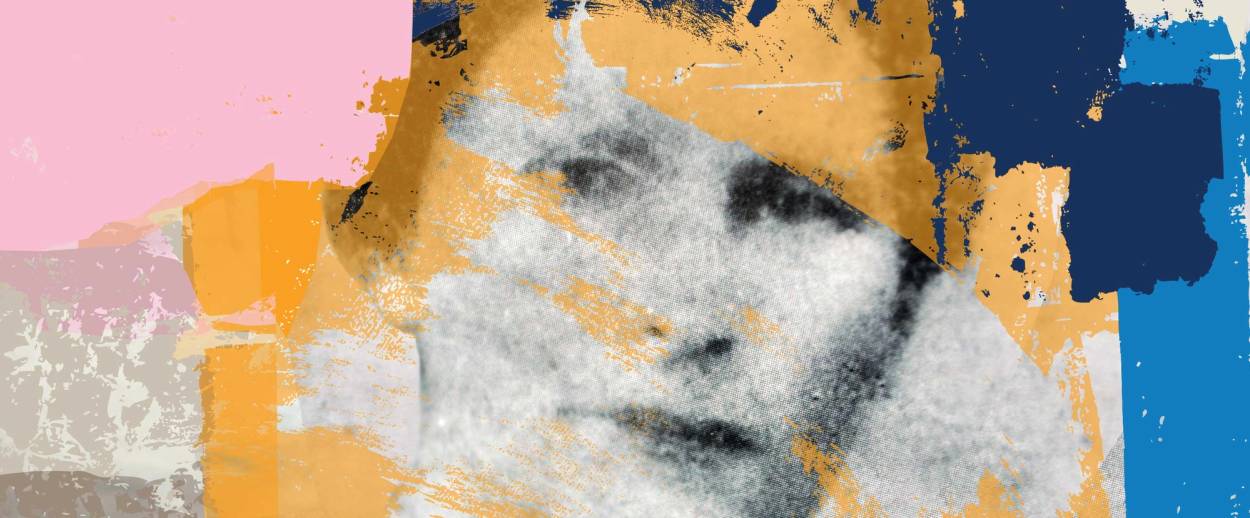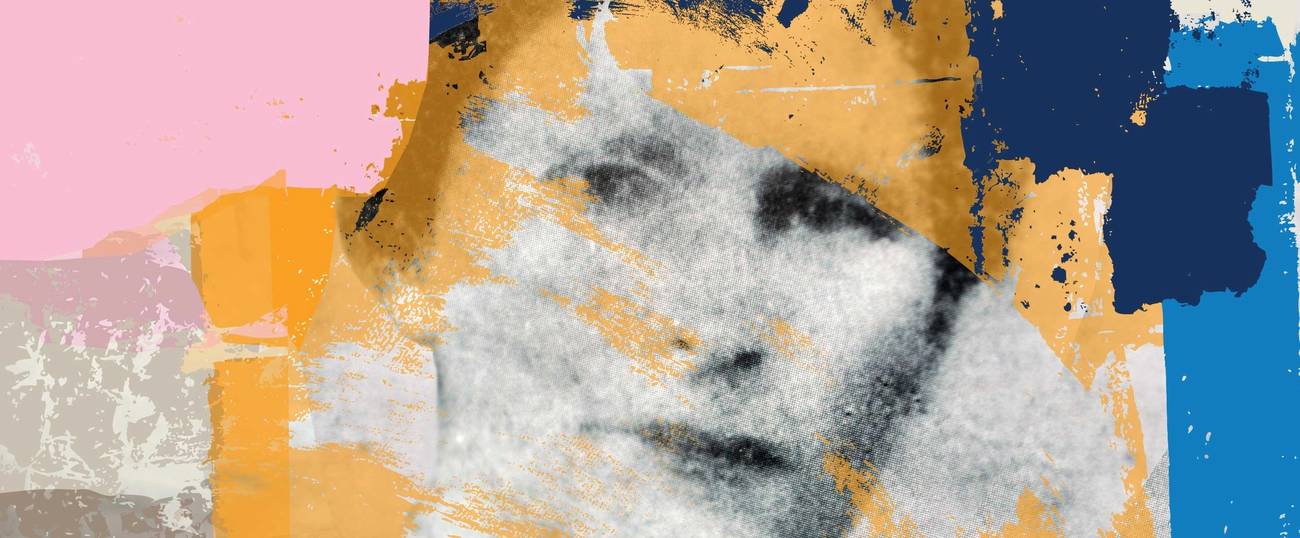Raped By Carl Jung, Then Murdered by the Nazis
But the theft and erasure of Sabina Spielrein’s intellectual legacy by the psychoanalytic establishment may be an even more troubling crime




In August 2012, in Rostov-on-Don, Russia, a protest took place critiquing a plaque that memorialized the 27,000 “citizens” who were systematically shot in a two-day massacre by the Nazis during World War II. Russian officials had removed the original plaque, which had honored the mostly Jewish victims, and replaced it with a revisionist plaque honoring only “citizens.” The precious Jewish souls, the doctors, lawyers, poets, scientists, librarians; all the parents, children, and grandparents, murdered specifically on account of their ancestry—were gone, literally overnight. Among them was Dr. Sabina Spielrein, the pioneer psychoanalyst, a member of the Vienna Psychoanalytic Society, the first child psychoanalyst in the world, (yes, even before Anna Freud), and the founder of Moscow’s Psychoanalytic Clinic.

Spielrein’s murder, and the enforced anonymity of her fate, were called to my attention by Angela Sells, in her new and impressive book: Sabina Spielrein: The Woman and the Myth. Sells quotes Rabbi Shimon Samuels, who “termed this removal of Jewish heritage (in Rostov-on-Don) a memoricide. Stripping the plaque, and by extension, its occupants, of Jewish roots, seems a deliberate attempt to suppress the historical horror that occurred at the site in order to avoid the discomfort of others.” What the Russian government did by removing the plaque, arguably to avoid “ethnic tensions” was, in a way, Sells argues, also done to Spielrein’s work, first by her psychoanalytic colleagues and then by their followers down to the present day.
Like Spielrein, her subject and fore-mother, Sells’ scholarship is stunningly diverse. She draws upon poetry, literature, mythology, psychoanalytic theory, opera, politics, history, as well as on Spielrein’s diaries, letters, and articles, often untranslated or still buried in private collections and archives. Sells’ analysis touches upon the nature of anti-Semitism—the particular way in which Jews, both women and men, were viewed by Christians, both theologically and in psychoanalytic circles in 20th-century Europe. Sells also draws upon postmodern feminist literature which has only recently explored the themes about which Spielrein was prescient.
Spielrein’s story is a case history of pathological patriarchy, anti-Semitism, Stalinism, Nazism, and genocide. It is also the story of an incredible pioneering thinker whose ideas were freely “borrowed” by the Great Men of Psychoanalysis whose followers conspired in defaming and demonizing Spielrein’s character and all traces of her subsequent 30-year history of intellectual and clinical work. To the extent to which Spielrein’s work was also feminist and female-centered, (or female-embodied), it constituted the forced disappearance of feminist knowledge which, as Australian scholar Dale Spender has so ably shown, has happened generation after generation, century after century. As a result, each feminist wave must continue reinventing the wheel of knowledge; few have broad shoulders upon which to stand.
To cite a personal example: In 1970, I demanded “$1 million in reparations on behalf of women who had been misdiagnosed and mistreated” at the annual meeting of the American Psychological Association. Nervous laughter followed, after which the muttering rose to a minor roar, I intuited: “This woman”—that would be me—“is suffering from a case of penis envy.” Yet Spielrein, a psychoanalytic pioneer whose name, work, and history I’d known nothing about—none of my many learned professors or psychoanalytic supervisors had ever mentioned her name—had attacked this concept more than half a century before my speech.
At the time, in 1970, I laughed in disbelief at the accusation/diagnosis from the audience—and began writing Women and Madness on the plane home from Miami. It would become a best seller. It even had a chapter that was hailed by other feminists as a “pioneering” exposé of sex between patient and therapist. Yet I had no idea that Spielrein’s analyst, Carl Gustav Jung, had deflowered her when she was one of his hospitalized patients and most needed his help.
This “affair”—this crime—was wrongfully immortalized on screen in David Cronenberg’s 2011 film A Dangerous Method. Keira Knightley plays Spielrein, Michael Fassbender plays Jung, and Viggo Mortensen plays Freud. The film does not convey the fact that Spielrein is a lot more than a “crazy” patient, nor do a number of plays about her, nor do ever so many learned treatises that all reduce the then-19-year-old to a permanent 19-year-old—or, as Sells phrases it, to an “ever-patient,” an “uber” patient, one who is continually and retroactively diagnosed, demonized, and diminished as “schizophrenic.”
According to Sells—and I agree with her analysis—in addition to her sister’s death, Spielrein was most probably a victim of childhood sexual abuse at her father’s hands. In Sells’ view, Sabina was hospitalized because of this abuse. According to Sells (and Spielrein), her breakdown was a“reaction to her father’s abuse which began at age 4.”
“In a 1909 letter to her mother [Spelrein writes]: ‘I fell in love with a psychopath [Jung], and is it necessary to explain why? I have never seen my father as normal.’ Spielrein further says to her mother that she and Jung ‘acted’ at times as caretakers for each other and that Jung’s behavior of raging, weeping, and jubilant prostration mimicked her own experience of her parents: ‘Remember how dear daddy was apologizing to you exactly in the same manner!’ Her equation of Jung to her father perhaps belies a subtle allusion to her experience of the affair as a form of continued abuse.”
According to Sells, in a private interview, Spielrein described what Jung, her treating physician, did to her as “rape.” In 1910, Spielrein writes: “Good God, if only he [Jung] had an inkling of how much I have suffered on his account and still suffer! … I am ashamed that I have wasted so much time. Courage. Ah, yes—courage.”
***
In 1972, I published Women and Madness. It had one chapter about sex between patient and therapist. Both clinicians and reviewers challenged the information I presented: “These women are making it up. They are mentally ill. How can you believe them?” And: “If anything happened they themselves wanted it to happen, they seduced their therapists and now when things have not turned out their way, they are crying ‘Foul.’ ”
This is exactly what clinicians used to say when female patients alleged incest; exactly what everyone used to say when women alleged rape or sexual harassment. Although I had done interviews and tried to research this subject, I am struck by how little I really knew about the history of this sordid subject among psychoanalysts and their patients.
I did not know how hard Spielrein fought against concepts such as penis envy back in 1912 and that she — not Jung, not Freud — was the one who first proposed the existence of mythic archetypes in the human unconscious and the existence of a death wish which, as she understood it, was about death and rebirth. Spielrein also began to chart the psychological relationship between mothers and daughters, the nature of female sexuality, and the origin of human speech.
Imagine if such work had never been disappeared. Imagine if Spielrein’s brief stint as a patient had not been used forever after to denigrate her as a “crazy” woman who fell in love with her psychoanalyst and “forced” him to cure her via a dangerous method known as the “love cure.”
Sounds shady, doesn’t it? There she was, a 19-year-old probable incest victim, (who was therefore often retroactively diagnosed as a “borderline personality” or as “schizophrenic”), who had experienced a “breakdown” of some kind in response to years of childhood abuse coupled with the recent death of her younger sister—and there he was, at the famed Burgholzli Clinic, the Aryan God-in-formation, who abused his power over Sabina when she was at her most vulnerable. (Granted, Jung himself was only 27 at the time but the power difference between them was real and significant.)
Jung’s was a criminal and extremely unethical act; perhaps it was the act of a selfish sociopath, who took advantage of what psychoanalysts have termed “transference.” Who but a sociopath would propose an openly polygamous union and living arrangement that would include his wife? Sabina wisely, sanely, turned him down. However, this in-patient’s (mis)treatment ended in eight months.
Sells stresses that Spielrein was pronounced “cured,” by none other than Eugen Bleuler. Although her on-and-off-again relationship with Jung continued for some time, both on an outpatient basis and then as a doctoral student, Spielrein put this “love cure”/affair/victimization entirely behind her and went on to obtain a doctorate in psychiatry. Her dissertation adviser was Jung, of course.
Apparently, Jung had a “thing” for Jewish girls. In 1910, Spielrein writes in her diary that “he [Jung] would love a black-complexioned Jewish girl,” and that as much as he wished to remain “close to his religion and culture,” he desired “liberation from his paternal responsibilities in an unbelieving Jewess.”
As Spielrein suspected and as Jung admitted to Freud, “The Jewess [has] popped up in another form, in the shape of my patient [Spielrein].” According to Sells, Jung had had a previous relationship with another Jewish woman. Spielrein intuited that she may be Jung’s “psycho-sexual replacement.”
Taking his eroticized anti-Semitism to a whole new level, Jung confronts Spielrein about why the Jews are marginalized: “… (the Jew) is the murderer of his own prophets, even of his Messiah.”
Here’s how Spielrein responds: “… You accuse us Jews, along with Freud, of viewing our deepest spiritual life as infantile wish fulfillment. To this, I must reply that there is hardly a nation so inclined to see mysticism and the promise of fate (faith?) in the world as the Jewish people.”
Freud relayed to Spielrein: “We are and remain Jews. The others will only exploit us and will never understand or appreciate us.”
***
Jung’s contemporaries refused to blame him, although Freud did. As recently as 2010, John Haule excused Jung’s transgression by invoking John Kerr to normalize it: “Jung was scarcely the only person to become involved with a patient. Gross’ exploits were legendary, Stekel had long enjoyed a reputation as a ‘seducer.’ Jones was paying blackmail money to a former patient, while noted colleague Otto Rank famously began an affair with his patient, Anaïs Nin.” Sells cites my own work on this issue to bolster her argument and I am grateful to her.
Yet Spielrein’s importance is hardly that of a patient, or an “Ever Patient.” She is a psychoanalytic pioneer, whose original ideas were “borrowed” by Jung and Freud, both with and without credit; and whose original ideas about female sexuality, death-and-rebirth, child psychology, and the importance of the mother-daughter relationship were utterly forgotten. As Sells ably demonstrates, Spielrein shifted rapidly away from Jung as a “love interest” as she began to worry about the possibility that he will “steal ideas from the research he has been reading.” Her fears were well-founded.
Spielrein writes:
I must admit that I greatly fear that my friend [Jung], who planned to mention my idea (of archetypes in our collective unconscious, about death-rebirth) in his article in July, saying that I have rights of priority, may simply borrow the whole development of the idea, because he now wants to refer to it as early as January. … How could I esteem a person who stole my ideas, who was not my friend but a petty, scheming rival? … I love him and I hate him.
Freud was careful to credit Spielrein for her idea about the death instinct. Amazingly, the subsequent editors of Freud’s works then systematically dropped Freud’s own crediting of Spielrein. And, in 1912, when members of the Vienna Psychoanalytic Society (VPS) discussed this idea, they had to be reminded by Spielrein, who was present and a member, “that this was an idea of hers ‘now in print,’ asserting intellectual ownership on the concept that she previously brought to the VPS in 1911.”
Spielrein dared to disagree with Freud and early on, introduced the concept of “female psychology as existing outside of an unrelated to penis envy.” He said, “No.” And the discussion apparently moved on.
In her lifetime, Spielrein was forced to endure groups of hostile and powerful men in both Vienna and Moscow, who were offended, mortified, by her ideas about female polymorphous eroticism, childhood sexuality, and penis envy. As Sells writes: “As the only woman in the room, Spielrein put forth images and ideas of an embodied eroticism at a time when women’s sexuality was labeled [by Freud] the ‘dark continent’ of psychology, and female orgasms were categorized into two groups: clitoral, or ‘infantile,’ and vaginal, or ‘mature.’ The clitoris itself was equated with an ‘amputated penis,’ its stimulation considered a form of penis envy, and lest a woman achieve satisfaction through ‘penetration,’ she was often diagnosed with a case of frigidity or hysteria. Contrarily, right or wrong, Spielrein here attempts to give voice to the ‘special’ nature of women’s arousal without degrading its manifestation or filtering it through a range of neuroses.”
Spielrein could not earn a living in Vienna, Zurich, or Geneva because she was a woman. In 1923, she was forced to return to Moscow where Stalin allowed her to found the first Psychoanalytic Clinic; she flourished there until the late 1920s when Stalin shut her down because psychoanalytic ideas were “too Jewish.”
Spielrein left Moscow and returned to her hometown where she continued seeing patients quietly. (It was dangerous to do so and the Moscow Psychoanalytic Society had already disbanded). Inevitably, she became impoverished. In rapid-fire order, she lost her three brothers whom Stalin had executed in the Gulag, then her husband, and finally her parents.
Without access to the kind of colleagues, admirers, or students who’d rescued Freud at the last moment (he’d refused to leave Vienna), or who’d rescued major Orthodox Torah scholars—Spielrein was trapped, with neither family nor powerful friends abroad. In 1942, the Nazis murdered her and her two daughters, together with 27,000 other Jews in a two-day massacre in Rostov-on-Don.
Unbelievably, according to Sells, (and she documents this), because Spielrein wrote about the Death Instinct (which she viewed as a theme of death and rebirth), some psychoanalytic scholars have even tried to blame her for her murder at Nazi hands! She wanted it, she invited it, she refused to flee from it … yes, 6 million Jews all wanted to be murdered—and Spielrein is also the Jewish Seductress who tempted and seduced Jung.
It is unbearable that Spielrein’s work was taken and used without crediting her; that her character was defamed by the Great Men who used her ideas without crediting her; and that she was unable to earn a living in Austria and in Switzerland because she was a woman; unable to continue her groundbreaking work in Moscow because she was a Jew; and was, eventually, in 1942, murdered by the Nazis.
In a heroic act of resistance against “memoricide,” Sells has begun Spielrein’s long-overdue resurrection. Angela Sells’ book is a major, perhaps a definitive, feminist contribution to the literature. Someone should make a movie about the real Sabina Spielrein.
***
Like this article? Sign up for our Daily Digest to get Tablet Magazine’s new content in your inbox each morning.
Phyllis Chesler is the author of 20 books, including the landmark feminist classics Women and Madness (1972), Woman’s Inhumanity to Woman (2002), An American Bride in Kabul (2013), which won a National Jewish Book Award, and A Politically Incorrect Feminist. Her most recent work is Requiem for a Female Serial Killer. She is a founding member of the Original Women of the Wall.